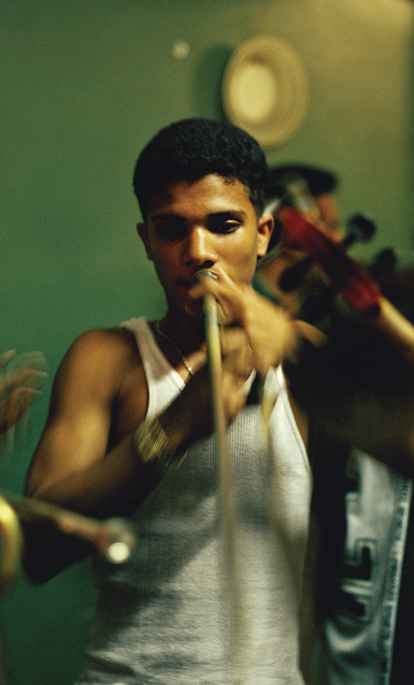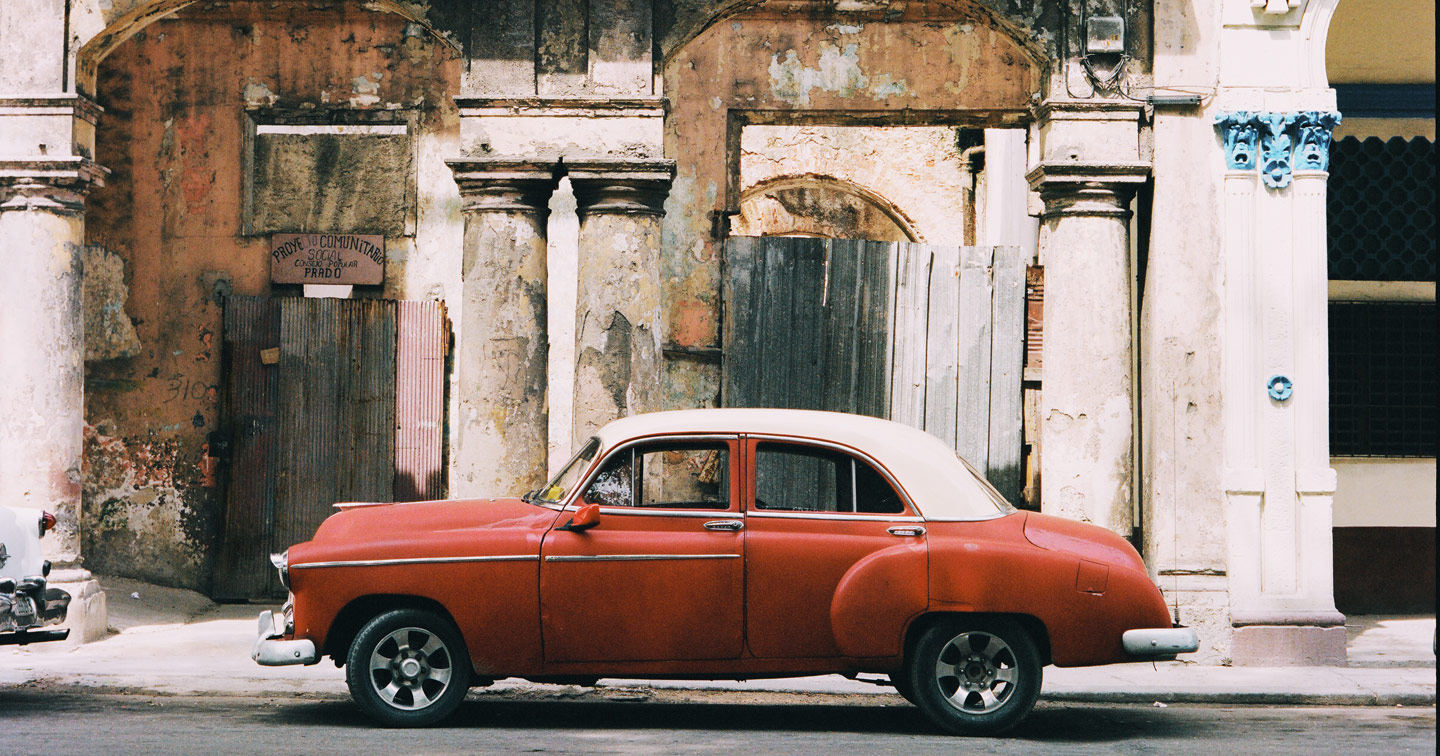
A few suggestions to get the holiday planning process started

Travelling with us means enjoying a trip that has been meticulously crafted by our team of experts, each knowing their specialised country like the back of their hand. Tailor-made with originality, quality and cultural immersion in mind, we can customise itineraries based on your taste, be that an architecture aficionado, a food fanatic or an environment enthusiast. Working hand-in-hand with local Concierges and guides, we’ll uncover spots perfect for you. From hidden gems to iconic landmarks, our curated experiences are supported by an array of additional services, including a 24-hour helpline and an app full of recommendations.
ENQUIRE NOWDiscover different ways to explore Cuba
Practical advice and inspiration to help you prepare for your holiday
Who better to entrust with your travel plans than our team of consultants, boasting eleven Conde Nast Top Travel Specialists among them? With regular research trips, they stay up to date on the best experiences and newest properties. And guess what – our expertise doesn’t end there. While you’re away, we’ll hook you up with the best guides around, teeming with contagious passion for their beloved country. For the finer details, our Concierges are clued up on your likes and dislikes and are just a WhatsApp away for personalised tips and tricks on where to go and what to see. In short, we’ve covered every possible travel-related base.

There’s nowhere quite like Cuba. Combining Latin America flair and a laid back Caribbean vibe, few places in the world conjure such iconic imagery - Castro, cars and cigars among many, many others. The heady city of Havana moves to the beat of its own drum, while everywhere you look is Instagram gold dust - from crumbling colonial architecture to graffiti from 'La Revolucion'. Cruise around in a hot-pink Chevy or make like the Motorcycle Diaries on a Harley. There are innumerable ways on your Cuba holidays to discover this island’s city hotspots, secret beaches and towns that feel like they’re straight out of a Gabriel Garcia Marquez novel.
Cuba holidays are for those game enough for something completely different and partial to a bit of grit here and there. Discerning travellers beware – you won’t find Michelin-star restaurants or fancy service here – immerse yourself in and embrace the island’s sensational activities and unapologetic culture. Photographers can get snap happy in Havana, exploring its vivid facades while historians could spend days unravelling the country’s turbulent past and rapid sociological progression. Music lover or not, you’ll get swept up in the rhythm like nowhere else, with salsa dancing at every turn and live bands bursting out into song – it’s impromptu, authentic and seriously addictive.
A medley of architecture from Art Deco to colonial-style grandeur is best explored from an open-top vintage car or a walking tour with an architect. While its history may be turbulent, Cuba has since developed beyond recognition - with cool creative enclaves, an array of charming casa particulares (family-run guesthouses) and new-generation paladars (privately-owned restaurants), serving dishes like lobster ceviche and suckling pig. Havana is undoubtedly the country’s drawcard with the most instagrammable old town in the world, boasting graffiti-clad walls, sweeping promenades and hosts of classic cars. While in the past, the food may have been considered dicey, the cocktails have always been legendary - think perfectly crushed mojitos - a favourite of Ernest Hemingway’s (there’s even a bar named after one of his local haunts). We haven’t even mentioned the delicious spiced rum cocktails and superlative daiquiris. Beyond Havana, you’ll find cities infused with rhythm, such as Santiago where the sounds of music floats out of beautiful baroque buildings. Then there are the fascinating rural abodes such as Trinidad, an utterly charming town where cowboys fly down the cobbled streets, there’s also the karst landscape of the Vinales Valley, cultivated by old-fashioned farming techniques. Or for something niche, discover exceptional bone fishing in the turquoise shallows of Cuba’s idyllic cays.
If you only have a week, we would recommend you tick off its UNESCO-listed cities. Start in Havana for salsa lessons, cocktail-making classes and Buena Vista Social Club scenes, then head to colonial Trinidad, where the pace is slower - ideal for strolling down the quaint cobbled streets and horse riding in the surrounding countryside. Finally stop in the beautiful port city of Cienfuegos for a dose of history and French-style architecture. If a stint on the beach is on the agenda, instead of the all-inclusive hotels of Varadero, turn to Cuba’s secret cays for unspoiled beaches, mangrove lagoons and brilliant white sand banks - they are heaven.
Considering that this gem of a tiny city was Cuba’s first capital, Baracoa feels forgotten in time. Cradled by a steamy mountain range and an abundance of flora, you may see horse-drawn carts, locals riding bareback down the streets and families washing clothes on the sandbanks.
Havana, Cuba's sultry capital city, is the nation's cultural hub, with museums and stunning architecture aplenty. The UNESCO World Heritage Site 'old town', Havana Vieja, is a must, and best experienced in the company of one of our expert guides. Dig deep into Cuban history past the revolution, into the Batista years and earlier. Havana is also is also one of the best places to learn two of Cuba's most sacred arts - cigars and rum - and there are plenty of bars and cigar shops around that make a suitable classroom. Cuba's turbulent Communist history is evident across the capital of this former Spanish (and American) colony, but with the recent regeneration there is no time like the present to visit this most vivacious of cities. With Castro gone, once crumbling facades have been beautifully restored by local artisans and architects, housing charming casa particulares (guesthouses) and restaurants. Even the food, once communistically bland, has come on in leaps and bounds and the internet, no longer in its stumbling infancy, is widely available through 3G networks.
A couple of hours west of Havana lies Viñales, a fertile region famous for its tobacco (the education continues) and bananas. The landscape is stunning and diverse, with mogotes - otherwise known as limestone karsts - providing a stark contrast to the flat landscape they pop up from. Further contrasts lie in the daily life of the Viñales inhabitants. Old fashioned farming methods are still in practice, with oxen and wooden carts dotting the countryside, making it a wonderfully peaceful stop on your journey. Want a change of pace? We can also arrange fishing trips off the coast of the island, where hardy fishermen and women can try their luck on the hunt for the so-called The Grand Slam: permit, tarpon and bonefish.

Our team of destination experts will get to know you and your unique requirements for your holiday

We work with you to build an ultra-personalised holiday itinerary with your choice of accommodation, experiences and activities

All of our holidays include little extras designed to make a big difference to your trip, from fast-tracking you through airport check-in and security to our network of local Concierges